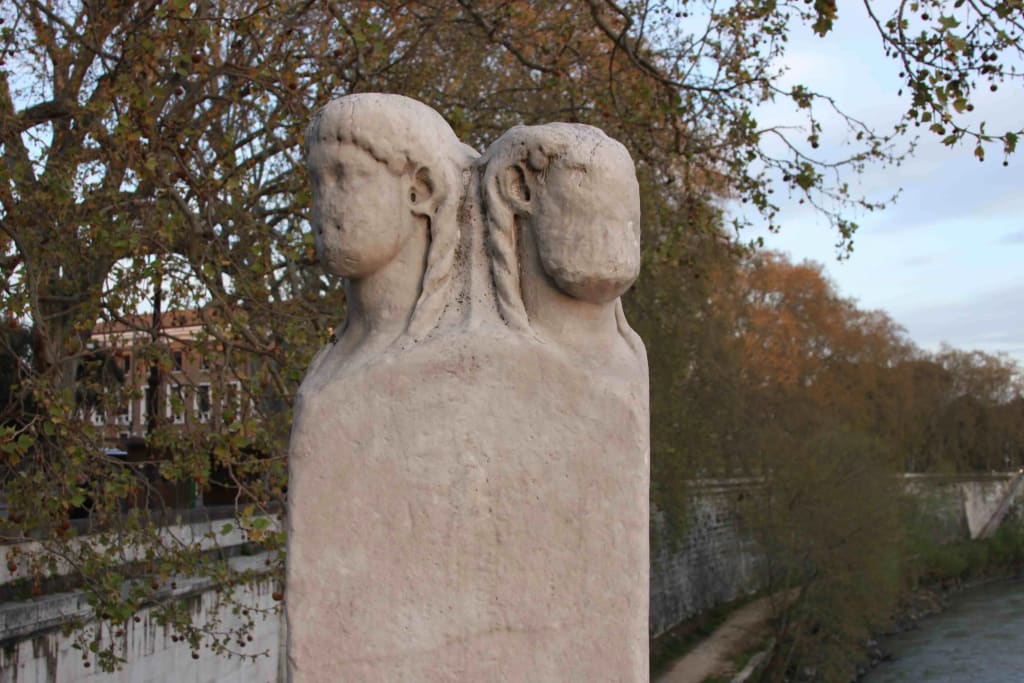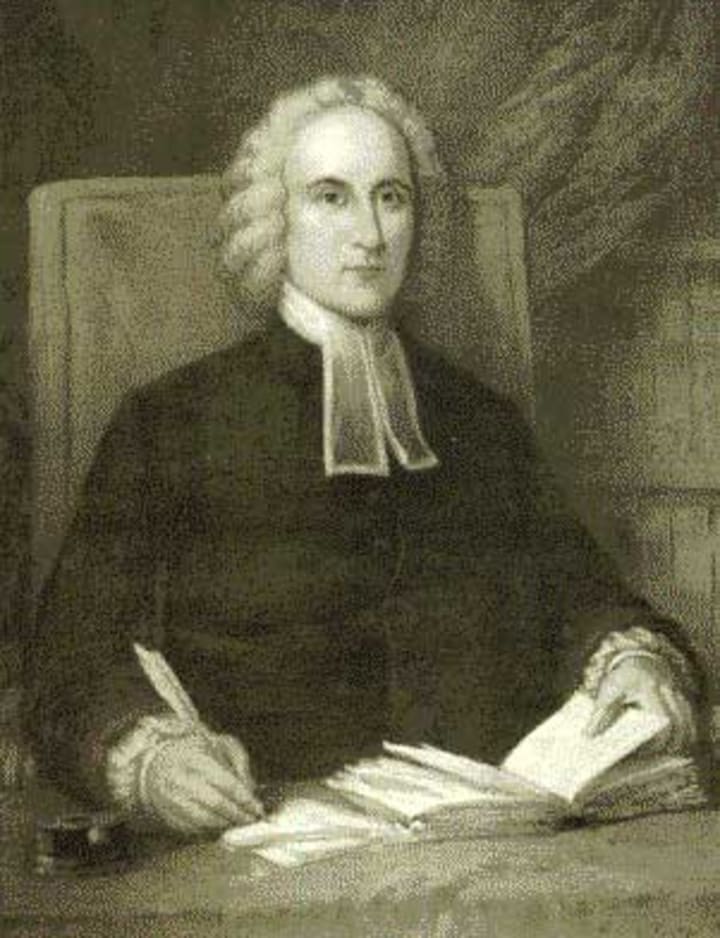History of New Year’s Resolutions
Where Did They Begin?

As I mentioned previously, New Year’s Day celebrations began in pre-Christian times, beginning with the Babylonians in March, but later changed to January by the Romans.
Where did we get the idea of New Year’s Resolutions, and why at the beginning of the year?
Roman New Year’s Resolutions
The month of January is dedicated to the Roman god who gave it its name, Janus, the two-faced deity who looks backward into the old year and forward into the new. His feast day, the Agonalia is on January 9. Janus was also the patron and protector of arches (Ianus in Latin), transitions, time, gates, doors, doorways, endings, and beginnings. He was also the patron of bridges. This statue (pictured above) is set on the bridge Ponte Fabricio, which crosses the Tiber River from Rome to Tiber Island. It survives today from its original construction in 62 BC during the time of Julius Caesar.
Even today, it is believed that touching the Janus head as you cross the bridge will bring good fortune, which is why it is so well-worn now. (According to ancient Roman farmers’ almanacs, the followers of the goddess Juno have a competing claim to the month of January.)
Christian New Year’s Resolutions
The custom of setting “New Year’s resolutions” began in Rome two millennia ago. They made such resolutions with a moral flavor: mostly to be good to others. But when the Roman Empire took Christianity as its official state religion in the 4th century, these moral intentions were replaced by prayers and fasting.

For example, Christians chose to observe the Feast of the Circumcision on January 1 instead of the revelry otherwise indulged in by those who did not share the faith. This replacement had varying degrees of success over the centuries, and Christians hesitated to observe some of the New Year practices associated with honoring the pagan god Janus.
Puritan New Year’s Resolutions
As I’ve described elsewhere, even as recently as the 17th century, Puritans in Colonial America avoided the indulgences associated with New Year’s celebrations and other holidays. In the 18th century, Puritans avoided even naming Janus. Instead, they called January “First Month.”
Instead, the Puritans urged their children to skip the revelry and spend their time reflecting on the year past and contemplating the year to come. In this way, they again adopted the old custom of making resolutions. These were enumerated as commitments to employ their talents better, treat their neighbors with charity, and avoid habitual sins.
New Year’s Resolutions

The great American theologian and preacher Jonathan Edwards brought up in New England Puritan culture, took the writing of resolutions to an art form. But he did not write his resolutions on a single day. Instead, during a two-year period when he was about 19 or 20, following his graduation from Yale, he compiled some 70 resolutions on various aspects of his life, which he committed to reviewing each week.
Here are just three:
- Resolved, in narrations, never to speak anything but the pure and simple verity.
- Resolved, never to speak evil of any, except I have some particular good call for it.
- Resolved, always to do what I can towards making, maintaining, and establishing peace, when it can be without over-balancing detriment in other respects.
How do your resolutions compare?
Bill Petro, your friendly neighborhood historian
Subscribe to have future articles delivered to your email. If you enjoyed this article, please consider leaving a comment.
About the Creator
Bill Petro
Writer, historian, consultant, trainer
https://billpetro.com/bio
Enjoyed the story? Support the Creator.
Subscribe for free to receive all their stories in your feed. You could also pledge your support or give them a one-off tip, letting them know you appreciate their work.






Comments
There are no comments for this story
Be the first to respond and start the conversation.